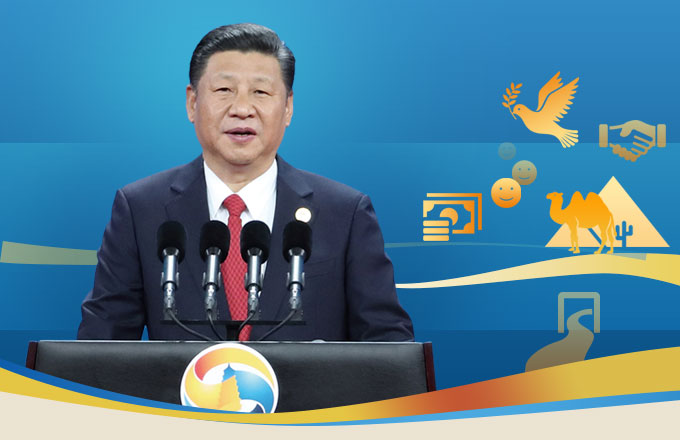Flow test for water project gets underway
The water supply in the first phase of the South-to-North Water Diversion Project's eastern route is safe and can be sent through, officials said on Thursday as they started a 24-hour water delivery experiment on the Jiangsu section.
With the purpose of checking the construction, equipment and water quality, the water flow test was scheduled in the Jiangdu station from 11 am on Thursday to 11 am on Friday.
Under construction since 2002, the eastern route will begin operating in the third quarter of this year.
Zhang Jinsong, deputy director of the Jiangsu South-to-North Water Diversion Project office, said that after three water quality tests, the water supply has met safety standards.
Water pollution remains a concern in the lower reaches of the Yangtze River. Zhang said 17.4 billion yuan ($2.84 billion) has been spent on 426 pollution-prevention projects. Now the pollutant emitted in the river is 85 percent less than it was in 2000. Rivers and lakes along the route, which were known for their severe pollution, are now clean and have edible fish.
Du Bingzhao, an official with the Office of the South-to-North Water Diversion Project Commission of the State Council, said that the commission has moved from solving pollution problems in rivers to regulating trash and raising emission standards.
"We have also closed down a large number of high-pollution enterprises along the river," Du said.
The South-to-North Water Diversion Project will take water from the Yangtze River in the south, through eastern, central and western routes, to drought-prone cities in the northern regions of China where surface water is scarce.
The project, when put into operation, will supply 44.8 billion cubic meters of water a year to the north, which is equivalent to the water flow in the Yellow River.
Using 13 cascade pumping stations, the water from the lower reach of the Yangtze River will be transported to north Jiangsu, Anhui, Shandong, Hebei and Tianjin for living, industry, navigation and irrigation.
But not everyone is happy about the prospect.
By taking water from the Yangtze River, the project will have an impact on the river's ecosystem, resulting in lower water quality and fewer fish, said Ma Jun, an environmentalist.
"Though the water diversion will enrich the water supply in the north, its impact on the ecosystem is irreversible," he said.
Zhang did not deny the impact of the project, but he said, "What we pay is much less than what we gain."
Zhang said that every year, 2 to 3 percent of water from the Yangtze River will be sent to the north.
"Unlike the western or central routes, where water is more scarce, the lower part of the Yangtze River has plenty of water."
"We also need the public to be aware of water conservation," he said.
Because the layout of the eastern route is built on the basis of an existing water diversion structure in Jiangsu province, the Beijing-Hangzhou Grand Canal, the project had little effect on local residents.
On the central route, about 350,000 people have had to move because of the construction.


















